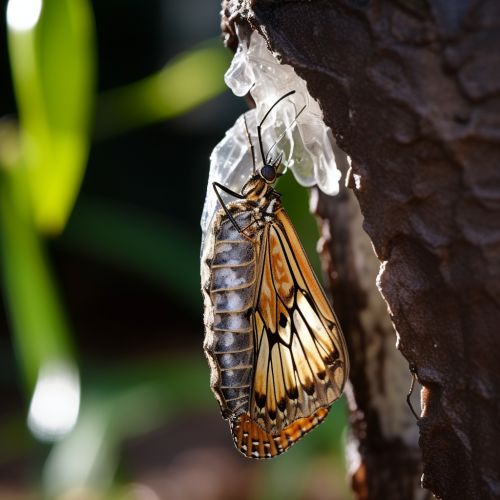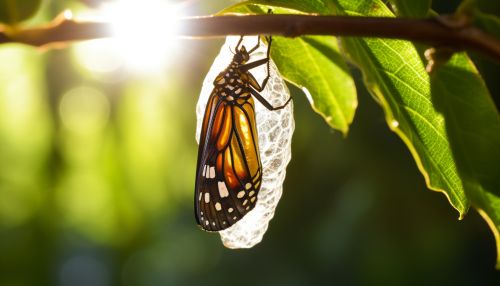Complete Metamorphosis
Introduction
Complete metamorphosis, also known as holometabolism, is a type of insect development that includes four distinct stages: egg, larva, pupa, and adult. This process is a key characteristic of a large group of insects, including butterflies, beetles, flies, and wasps, which together form the group Endopterygota. This form of development is one of the most successful life strategies on Earth, with holometabolous insects making up the majority of insect diversity.


Life Cycle of Holometabolous Insects
Egg Stage
The life cycle of holometabolous insects begins with the egg stage. The female insect lays eggs, often in a specific environment that will provide the emerging larvae with food and protection. The eggs are typically small, round or oval, and may be laid individually or in clusters. The egg stage is a crucial period for embryonic development, where the basic body plan of the insect is formed.
Larval Stage
The second stage of complete metamorphosis is the larval stage. The larva hatches from the egg and typically bears little resemblance to the adult insect. Larvae are primarily focused on growth and consume large amounts of food to fuel their development. They undergo a series of molts, shedding their exoskeleton to allow for further growth. The larval stage can be further divided into several instars, which are the periods between each molt.
Pupal Stage
Following the final larval instar, the insect enters the pupal stage. During this stage, the insect undergoes a dramatic transformation in a process known as pupation. The larval tissues are broken down and the adult structures are formed. The pupa is typically immobile and may be protected by a cocoon or other structure. This stage can last from a few days to several months, depending on the species and environmental conditions.
Adult Stage
The final stage of complete metamorphosis is the adult stage. The adult insect, or imago, emerges from the pupa fully formed. Adults are typically capable of reproduction and may have additional abilities not present in the larval stage, such as flight. The adult stage is often the shortest stage of the insect's life cycle, with some species living as adults for only a few days or weeks.
Evolution of Complete Metamorphosis
The evolution of complete metamorphosis is a topic of ongoing research in the field of entomology. It is believed that this form of development evolved from incomplete metamorphosis, where the immature stages resemble the adults and there is no pupal stage. The evolution of complete metamorphosis has allowed for a division of labor between the larval and adult stages, with larvae typically focused on growth and adults focused on reproduction.
Advantages and Disadvantages of Complete Metamorphosis
Complete metamorphosis has several advantages and disadvantages that have influenced the success and diversity of holometabolous insects.
Advantages
One of the main advantages of complete metamorphosis is the division of labor between the larval and adult stages. This allows for each stage to be highly specialized for its specific tasks, such as growth or reproduction. Additionally, the separation of the larval and adult stages can reduce competition for resources, as they often occupy different ecological niches and consume different types of food.
Disadvantages
Despite its advantages, complete metamorphosis also has some disadvantages. The pupal stage, in particular, is a vulnerable period in the insect's life cycle. The pupa is typically immobile and defenseless, making it an easy target for predators and parasites. Additionally, the process of metamorphosis requires a significant amount of energy and resources, which can limit the insect's ability to survive in harsh or resource-poor environments.
